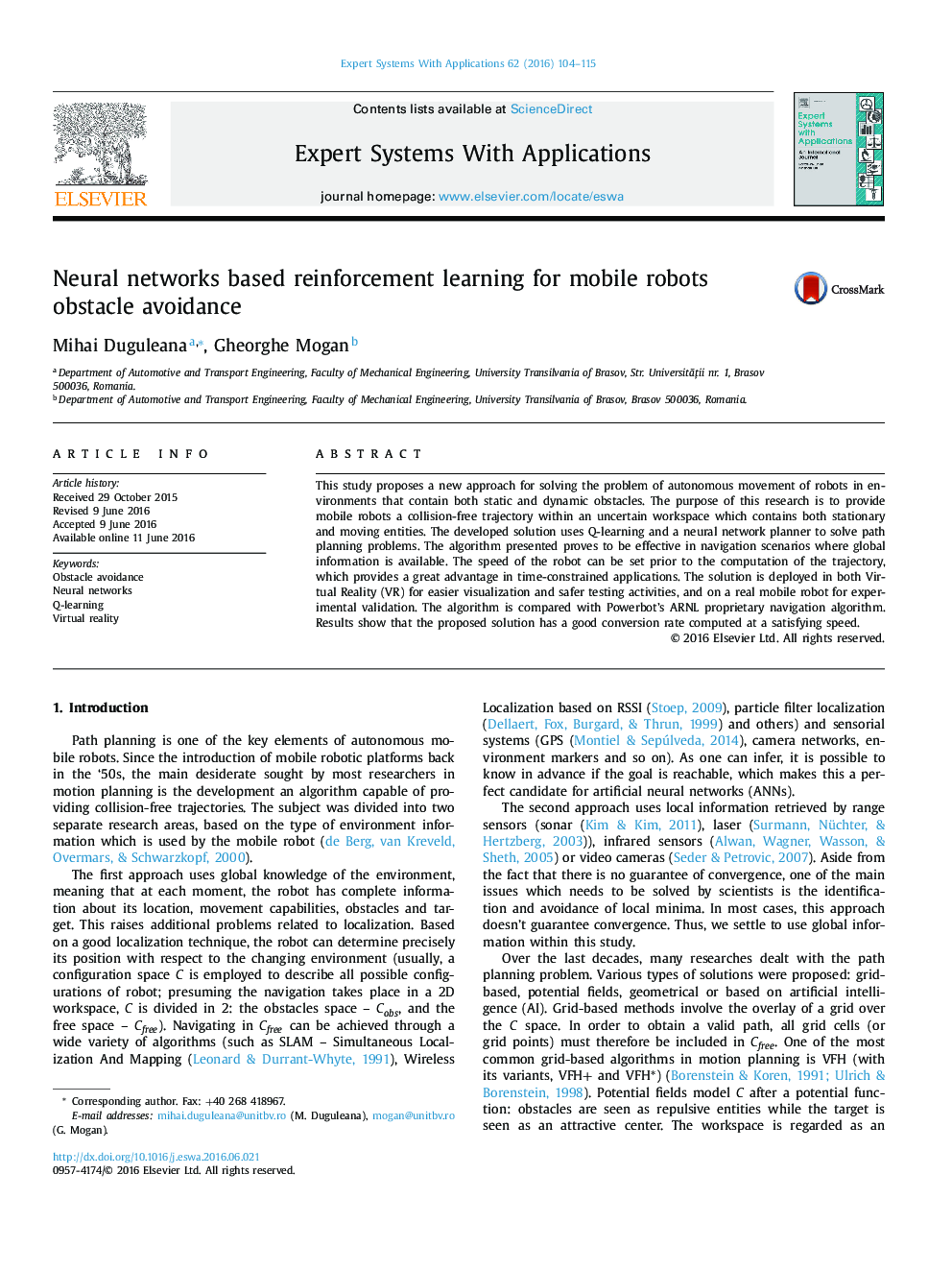| Article ID | Journal | Published Year | Pages | File Type |
|---|---|---|---|---|
| 383544 | Expert Systems with Applications | 2016 | 12 Pages |
•We propose a new path planning algorithm based on the use of Q-learning and artificial neural networks.•We analyze and model in VR the mobile robot PowerBot.•We implement and test the proposed algorithm in both VR and real workspaces.•The solution converges to collision-free trajectories in dynamic environments.
This study proposes a new approach for solving the problem of autonomous movement of robots in environments that contain both static and dynamic obstacles. The purpose of this research is to provide mobile robots a collision-free trajectory within an uncertain workspace which contains both stationary and moving entities. The developed solution uses Q-learning and a neural network planner to solve path planning problems. The algorithm presented proves to be effective in navigation scenarios where global information is available. The speed of the robot can be set prior to the computation of the trajectory, which provides a great advantage in time-constrained applications. The solution is deployed in both Virtual Reality (VR) for easier visualization and safer testing activities, and on a real mobile robot for experimental validation. The algorithm is compared with Powerbot's ARNL proprietary navigation algorithm. Results show that the proposed solution has a good conversion rate computed at a satisfying speed.
